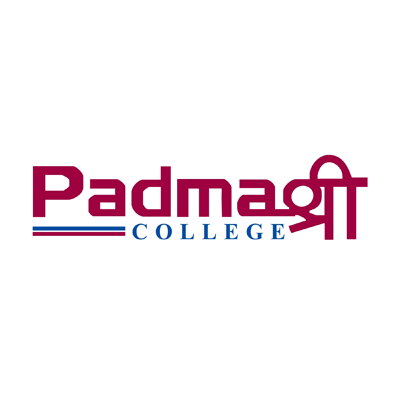Overview
Overviews of Diploma in Ophthalmic Science at Tilganga Institute of Ophthalmology, Kathmandu, Nepal (affiliated with CTEVT)
The Tilganga Institute of Ophthalmology (TIO), affiliated with the Council for Technical Education and Vocational Training (CTEVT), offers a comprehensive Diploma in Ophthalmic Science. This three-year program is designed to develop skilled Ophthalmic Assistants who are equipped to provide a wide range of eye care services, from preventive and promotive to curative and rehabilitative care.

Program Details
- Duration: 3 Years
- Seats Available: 40
- Fees Range: NPR 180,000 to 340,000
- Medium of Instruction: English and/or Nepali
Admission Requirements
Admission to the Diploma in Ophthalmic Science is competitive and based on merit. Candidates must have successfully passed the Secondary Education Examination (SEE) with at least a 'C' grade in Mathematics, English, and Science, and an overall GPA of 2.0 or higher. Additionally, candidates must pass an entrance examination conducted by CTEVT. Those who have completed the TSLC in Ophthalmology with a minimum of 67% will be given preference.
Program Mission and Philosophy
The curriculum is designed to produce mid-level ophthalmic professionals who are not only knowledgeable in ophthalmology but also possess the skills necessary to address the diverse eye care needs of communities. The program emphasizes a holistic approach, integrating clinical skills with a strong foundation in general medicine. The curriculum is aligned with the standards set by the Nepal Health Professional Council, ensuring that graduates are prepared to meet the health needs of Nepal's population.
Curriculum Structure
The program is divided into three years, each focusing on different aspects of ophthalmic science:
- First Year: Basic sciences and foundational subjects
- Second Year: Medical sciences with a focus on ophthalmology
- Third Year: Application of theory and skill development in both hospital and community settings
Students must maintain a minimum of 90% attendance in each subject and secure at least 40% in theory and 50% in practical exams to pass. The grading system is categorized as follows:
- Distinction: 80% and above
- First Division: 65% to below 80%
- Second Division: 50% to below 65%
- Pass Division: Pass marks to below 50%
First Year: Foundation in Basic Sciences
The first year focuses on building a strong foundation in both basic sciences and general subjects. The total mark allocation for this year is 850.
Subjects and Weekly Hours:
- English: 3 hours (Theory)
- Nepali: 3 hours (Theory)
- Social Studies: 2 hours (Theory)
- Anatomy & Physiology: 5 hours (Theory + Practical)
- Physics: 6 hours (Theory + Practical)
- Chemistry: 6 hours (Theory + Practical)
- Zoology: 5 hours (Theory + Practical)
- Botany: 5 hours (Theory + Practical)
- Mathematics & Statistics: 5 hours (Theory + Practical)
Evaluation:
- Theory marks: 560
- Practical marks: 120
- Internal assessments: 170
Second Year: Core Ophthalmic Sciences
The second year deepens the students' knowledge in ophthalmic and related medical sciences, with a total mark allocation of 1000.
Subjects and Weekly Hours:
- Ocular Anatomy and Physiology: 5 hours (Theory + Practical)
- Ocular Pharmacology and Pathology: 5 hours (Theory + Practical)
- Systemic Diseases and Eye: 4 hours (Theory)
- Ocular Disorders I: 7 hours (Theory + Practical)
- Optics, Refraction, and Binocular Vision: 7 hours (Theory + Practical)
- Investigative Ophthalmology: 3 hours (Theory + Practical)
- Ocular Surgery: 5 hours (Theory + Practical)
- Community Ophthalmology I: 4 hours (Theory + Practical)
Evaluation:
- Theory marks: 700
- Practical marks: 300
- Internal assessments: 140
Third Year: Advanced Clinical Practice
The third year is designed to focus on advanced clinical practice, including hospital and community-based training. The total mark allocation for this year is 1050.
Subjects and Weekly Hours:
- Health Care Management: 3 hours (Theory + Practical)
- Ocular Disorder II: 6 hours (Theory + Practical)
- Community Ophthalmology II: 5 hours (Theory + Practical)
- Low Vision and Optical Dispensing: 3 hours (Theory + Practical)
- Clinical Practice I (Hospital Based): 10 hours (Practical)
- Clinical Practice II (Hospital Based): 10 hours (Practical)
- Clinical Practice III (Community Based): 8 hours (Practical)
Evaluation:
- Theory marks: 250
- Practical marks: 800
The program is intensive, with each year focusing on different aspects of ophthalmic science. The curriculum integrates theoretical knowledge with practical application, ensuring that students are well-prepared for a career in ophthalmology. The evaluation system includes internal assessments, final exams, and practical exams, which are essential for student progression.
- Total Marks for First Year: 850
- Total Marks for Second Year: 1000
- Total Marks for Third Year: 1050
Certification and Job Prospects
Upon successful completion of the program, students are awarded the "Proficiency Certificate Level in Ophthalmic Science (Ophthalmology)." Graduates are eligible for registration with the Nepal Health Professional Council and can pursue careers as Health Workers in eye and health institutions, holding positions equivalent to Non-gazette 1st class/Level 5 (technical), as prescribed by the Public Service Commission of Nepal.
Career Path
Graduates of this program are well-positioned for a range of roles within the healthcare sector, particularly in ophthalmology. They can work in hospitals, clinics, or community health settings, contributing significantly to the prevention and treatment of eye diseases across Nepal.
Conclusion
The Diploma in Ophthalmic Science offered by TIO is a robust program aimed at developing compassionate, skilled, and knowledgeable ophthalmic health professionals. With a strong emphasis on both theoretical knowledge and practical skills, the program prepares students to make significant contributions to the field of eye care, ensuring that they are equipped to meet the challenges of a rapidly evolving healthcare landscape.
Contact Tilganga Institute of Ophthalmology's administrative office for detailed information on the Diploma in Ophthalmic Science course, including fees, scholarships, facilities, counseling, eligibility criteria, etc.












